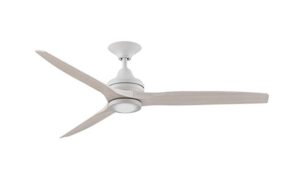What to Know About Ceiling Fan Direction
Ceiling fans are a great way to supplement your home cooling system during the summer months. These multi-purpose fixtures can cool off indoor and outdoor living areas without driving up your energy bills. What about the distribution of warm air? Ceiling fans can also be used in the fall and winter months to spread warm air throughout an interior space. Learn more about how this process works!
Indoor & Outdoor Fans
Change Fan Settings
 If your ceiling fan has a reversible direction motor, it can be set to run clockwise during cooler times of year. Typically, a ceiling fan runs counterclockwise to pull air down and cool a space. The opposite direction pulls cold air up and dispenses it throughout a room as warm air.
If your ceiling fan has a reversible direction motor, it can be set to run clockwise during cooler times of year. Typically, a ceiling fan runs counterclockwise to pull air down and cool a space. The opposite direction pulls cold air up and dispenses it throughout a room as warm air.
Using a ceiling fan in colder weather allows homeowners to set their thermostats lower and save money on heating costs!
How to Adjust Motor
First, make sure the fan is turned off. Manually, you can toggle the motor switch into its new position. More advanced models may be adjusted from the remote control settings.
Benefits of Year-Round Use
According to Energy Star, you can save 8 to 10 percent on heating costs over a 24-hour period for every degree back the heating system is set. Rely less on your home heat source and reap these significant cost savings with a ceiling fan!
To take full advantage of energy efficiency, make sure the ceiling fan is hung at the correct ceiling height. As a general rule of thumb, 7 to 9 feet from the floor should preserve the airflow and warming effect.
Our Hartford and Southington showrooms have ceiling fans on display at 8-feet, which is the average ceiling height for a New England home. See how over 100 fans on display would look and function in your home! To see it, touch it and take it home, visit us today.
